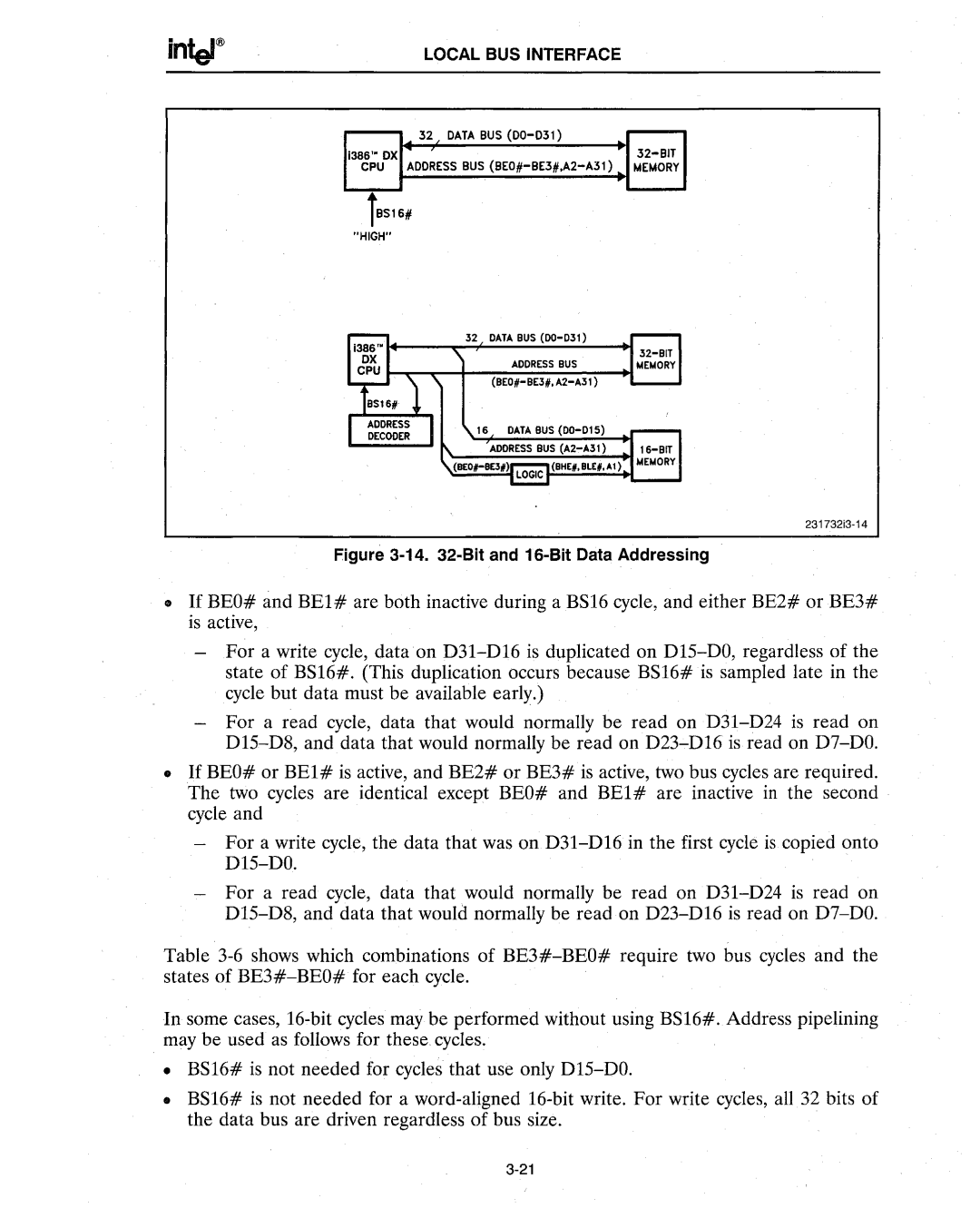
LOCAL BUS INTERFACE
| 32 DATA BUS |
|
1386'· OX | ADDRESS BUS | |
CPU | I.lEI.lORY |
TBS16#
"HIGH"
32 DATA BUS
ADDRESS BUS
16 DATA BUS
Figure 3-14. 32-Bit .and 16-Bit Data Addressing
•If BEO# and BEI# are both inactive during a BSl6 cycle, and either BE2# or BE3# is active,
For a write cycle, data on
For a read cycle, data that would normally be read on
•If BEO# or BEl # is active, and BE2# or BE3# is active, two bus cycles are required_ The two cycles are identical except BEO# and BEl # are inactive in the second cycle and
For a write cycle, the data that was on
| . |
For a read cycle, data that would normally be read on
Table
In some cases,
•BSI6# is not needed for cycles that use only
•BSI6# is not needed for a
